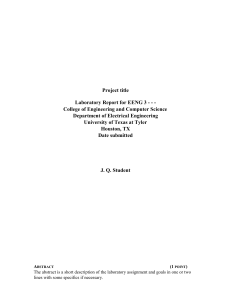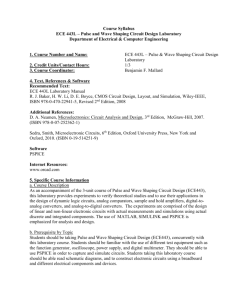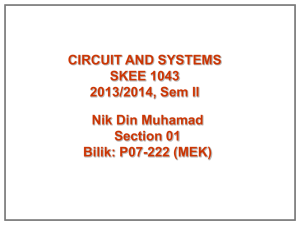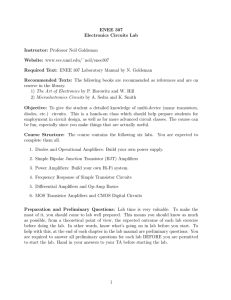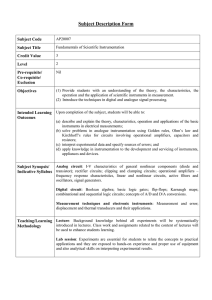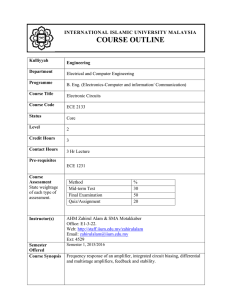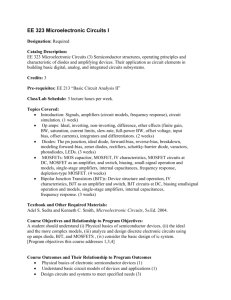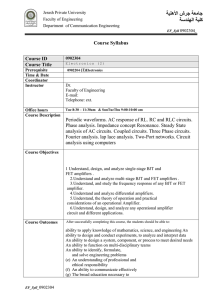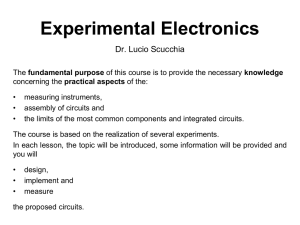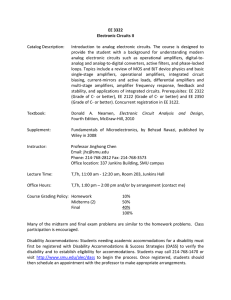experiment – 1 direct coupled amplifiers
advertisement
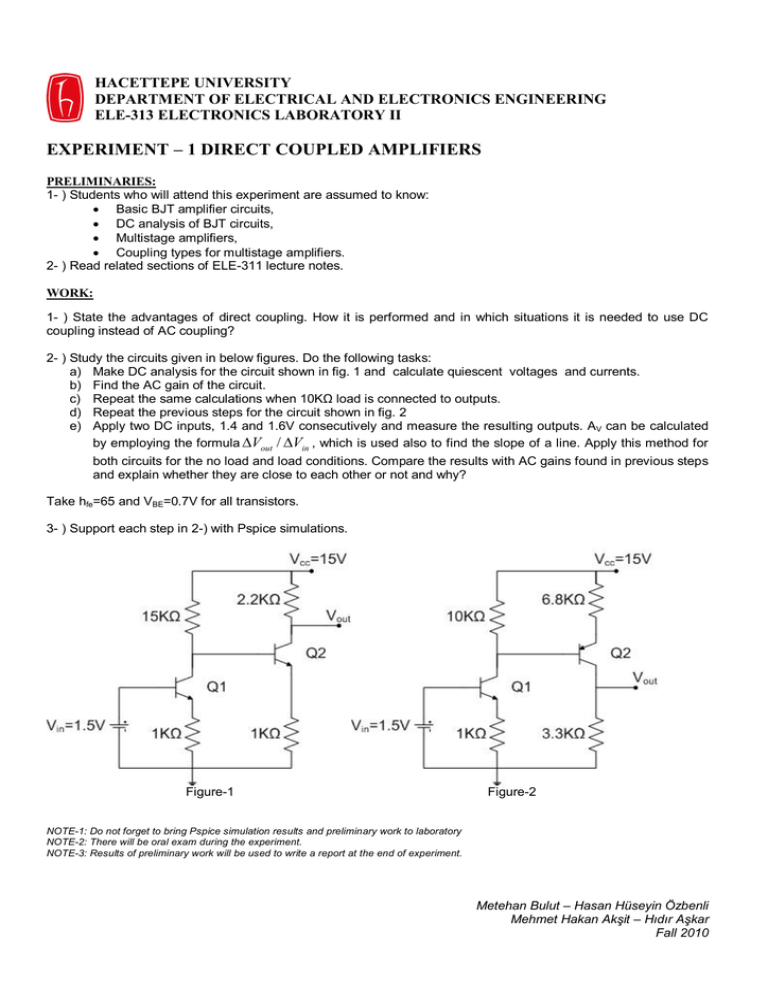
HACETTEPE UNIVERSITY DEPARTMENT OF ELECTRICAL AND ELECTRONICS ENGINEERING ELE-313 ELECTRONICS LABORATORY II EXPERIMENT – 1 DIRECT COUPLED AMPLIFIERS PRELIMINARIES: 1- ) Students who will attend this experiment are assumed to know: Basic BJT amplifier circuits, DC analysis of BJT circuits, Multistage amplifiers, Coupling types for multistage amplifiers. 2- ) Read related sections of ELE-311 lecture notes. WORK: 1- ) State the advantages of direct coupling. How it is performed and in which situations it is needed to use DC coupling instead of AC coupling? 2- ) Study the circuits given in below figures. Do the following tasks: a) Make DC analysis for the circuit shown in fig. 1 and calculate quiescent voltages and currents. b) Find the AC gain of the circuit. c) Repeat the same calculations when 10KΩ load is connected to outputs. d) Repeat the previous steps for the circuit shown in fig. 2 e) Apply two DC inputs, 1.4 and 1.6V consecutively and measure the resulting outputs. AV can be calculated by employing the formula Vout / Vin , which is used also to find the slope of a line. Apply this method for both circuits for the no load and load conditions. Compare the results with AC gains found in previous steps and explain whether they are close to each other or not and why? Take hfe=65 and VBE=0.7V for all transistors. 3- ) Support each step in 2-) with Pspice simulations. Figure-1 Figure-2 NOTE-1: Do not forget to bring Pspice simulation results and preliminary work to laboratory NOTE-2: There will be oral exam during the experiment. NOTE-3: Results of preliminary work will be used to write a report at the end of experiment. Metehan Bulut – Hasan Hüseyin Özbenli Mehmet Hakan Akşit – Hıdır Aşkar Fall 2010


